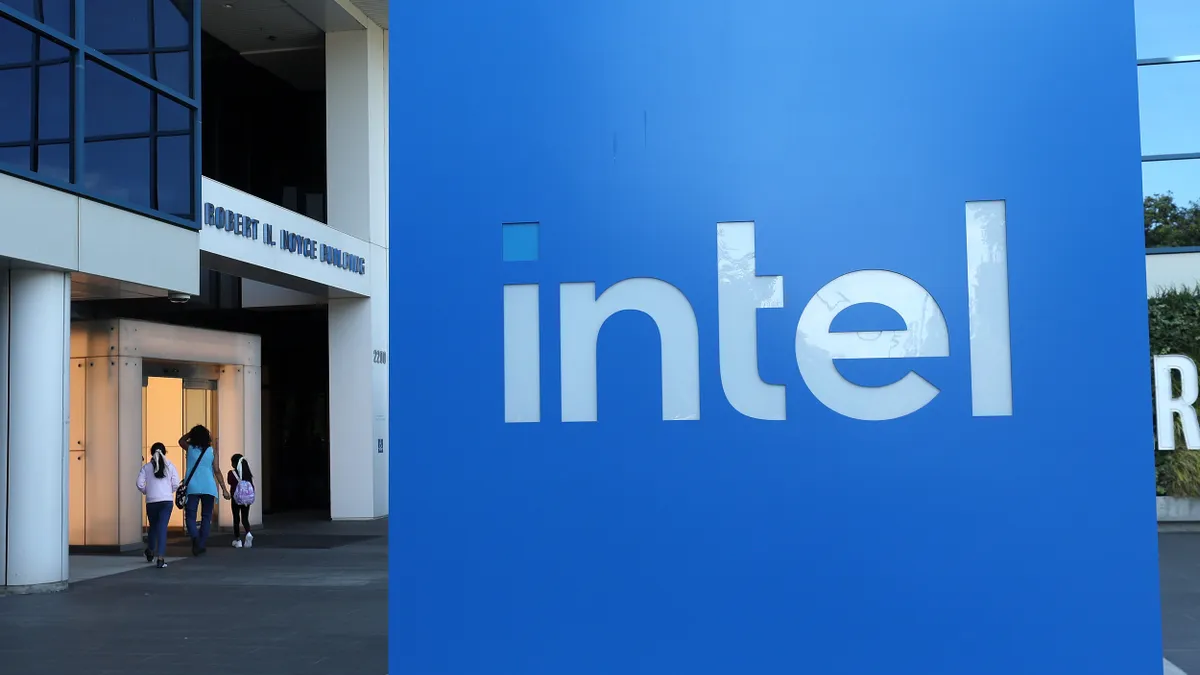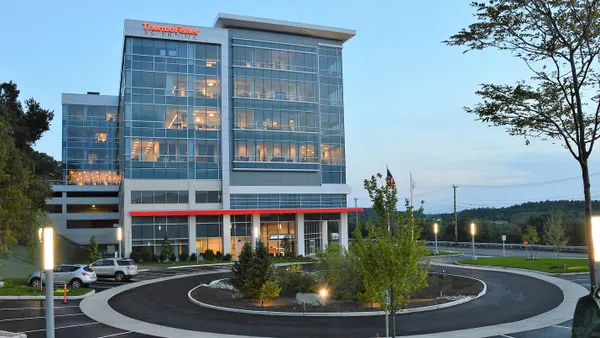Dive Brief:
- Intel will cut an unspecified number of workers as it looks to flatten its organizational structure and shift to an engineer-focused culture built on leaner teams, CEO Lip-Bu Tan said during a Thursday earnings call.
- The moves are part of a corporate overhaul ignited by the new CEO to cut costs, including lowering its operational spending forecast by half a billion dollars: down to $17 billion this year and $16 billion in 2026.
- While Q1 revenue came in flat year over year at $12.7 billion, the chipmaker lowered its guidance for Q2 to a range of $11.2 billion to $12.4 billion amid "fluid" trade policies and "the probability of a recession growing," CFO David Zinsner said on the call.
Dive Insight:
Intel, like many other manufacturers, is hedging its bets when it comes to the negative impact of prolonged tariffs. Zinser noted that while Q1 revenue likely benefited from increased demand as customers tried to get ahead of impending tariffs, Q2 revenue could dip.
“While we have offsets, including a global, highly diversified manufacturing footprint to help mitigate tariffs, we will certainly see costs increase," the CFO said. "The biggest risk we see is the impact of a potential pullback in investment and spending as businesses and consumers react to higher costs and the uncertain economic backdrop.”
Internally, Intel has been straining for over a year to rightsize its finances as its internal foundry model struggled to turn a profit. In December, CEO Pat Gelsinger departed amid the company's performance issues. Tan has now been in the role for five weeks, taking the helm in mid-March.
Tan did not specify the number of layoffs the company is planning, despite a report from Bloomberg earlier this week that the chipmaker plans to cut 20% of workers.
“I'm taking swift actions to simplify the way we do business and drive transparency and accountability across the company,” the CEO said. “We will empower smaller teams to move faster and make better decisions.”
The layoffs and the chipmaker's precarious financial state call into question the future of Intel's ongoing construction on multiple major chip factories. Tan said on the call that Intel would scrutinize its factory network as part of plans to lower capital expenses to $18 billion this year, down from $20 billion.
“We will continue to take a closer look at our existing factory footprint to ensure that we are making the most efficient use of our in-store capacity before committing to any additional spending,” Tan said.
The company has finalized nearly $8 billion in federal funding under the CHIPS and Science Act to help build plants in Ohio, Arizona, Oregon and New Mexico, though the future of the law and its contracts under the Trump administration remains unknown.
The flagship Ohio project received $1.5 billion of CHIPS money in November 2024, despite the fact that its construction timeline has been delayed multiple years, now set to open in 2031.
Ohio Gov. Mike DeWine was steadfast in his optimism on Wednesday that a chip factory – whether or not operated by Intel – will open at the site outside Columbus, according to a WSYX report.
“I think Intel will be making chips there. If they're not making chips, I will guarantee you someone will be making chips," DeWine said. “That facility is being made specifically to make chips. We need chips.”
Intel has been pushing to raise capital in recent days. Last week, the company sold its majority stake in programmable chip maker Altera for $4.46 billion. The sale is part of Tan's strategy to focus on Intel's core products and capabilities and refine its AI strategy, an area in which it has lost competitive edge in recent years to Nvidia.
“Our goal will be to take an integrated system and platform view to develop full stack AI solution that enable more accuracy, power efficiency, and security for our enterprise customers,” the CEO said. “Our goal will be to enable the next wave of computing defined by reasoning models, agentic AI and physical AI.”












